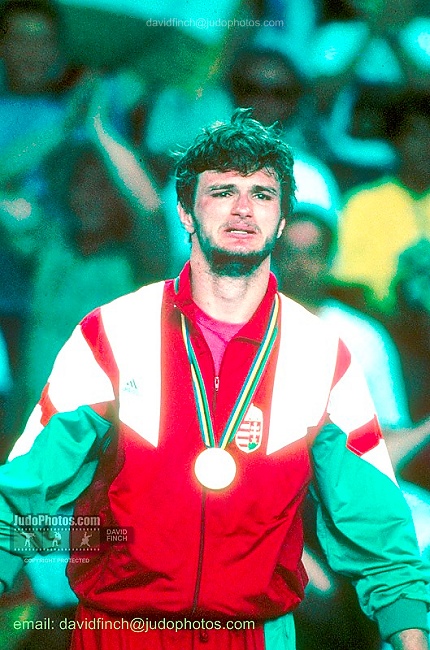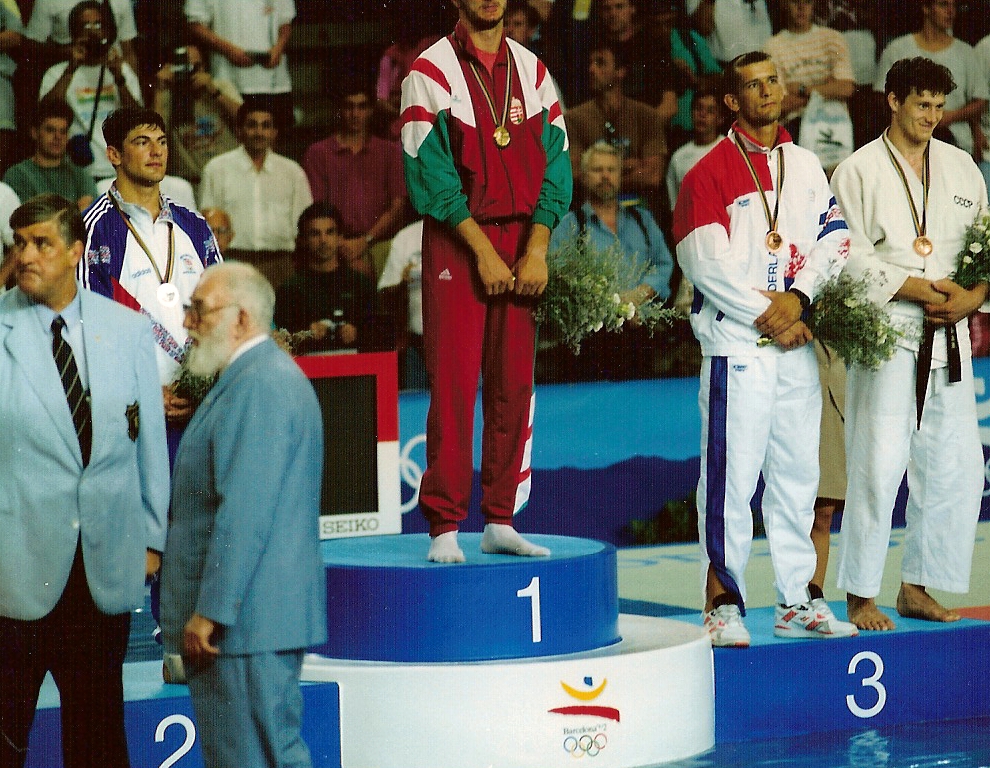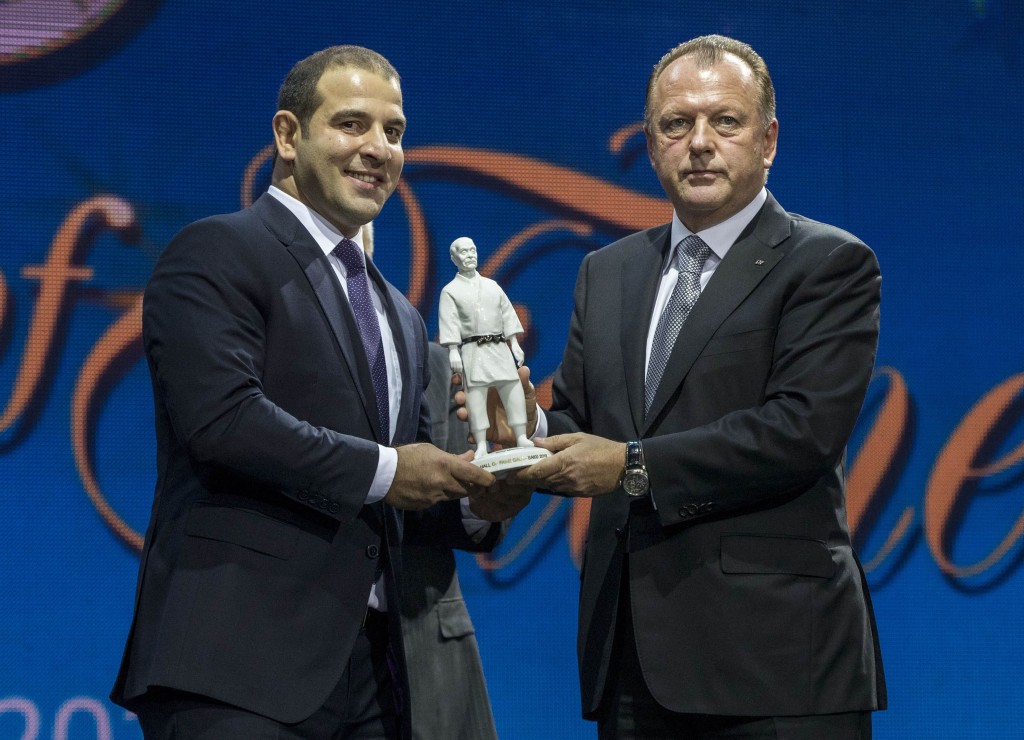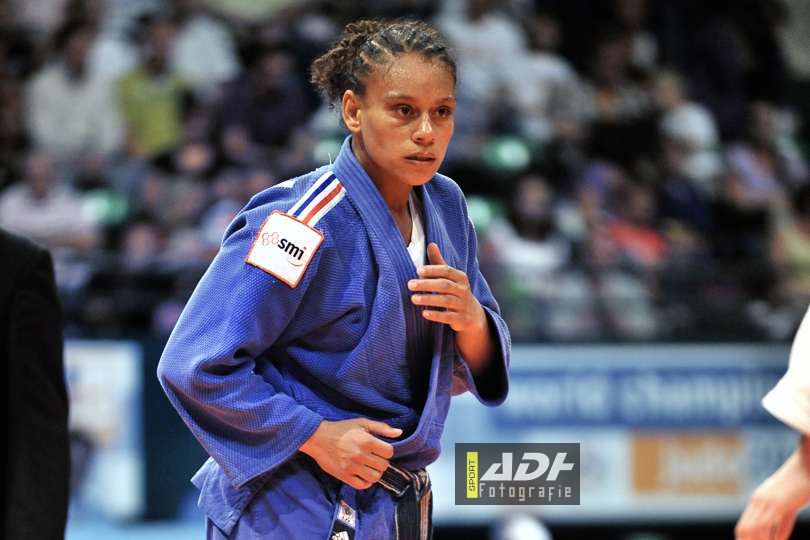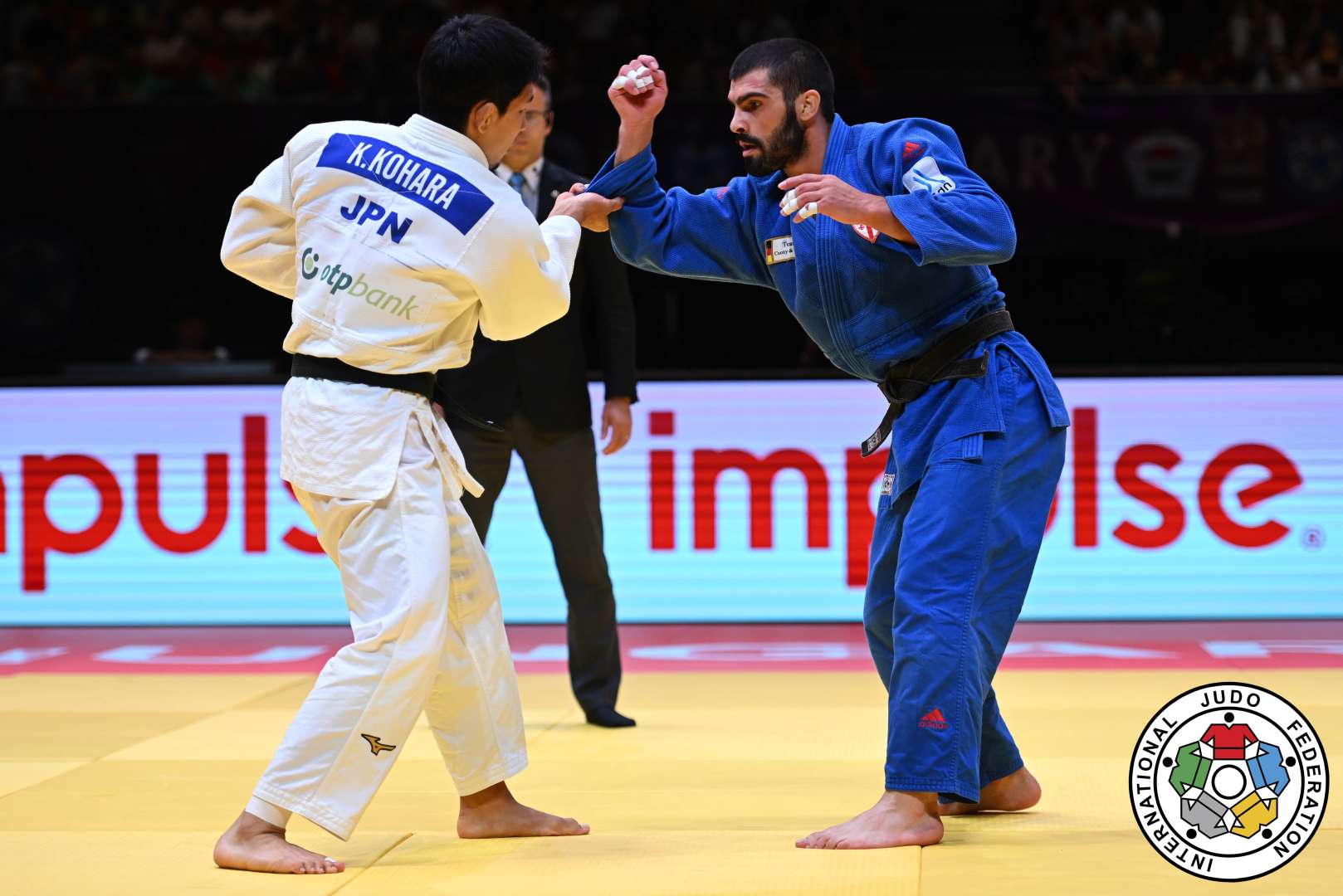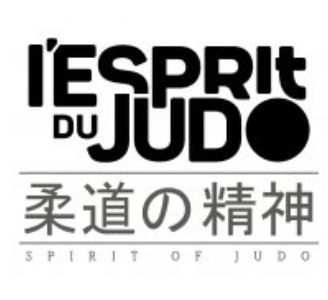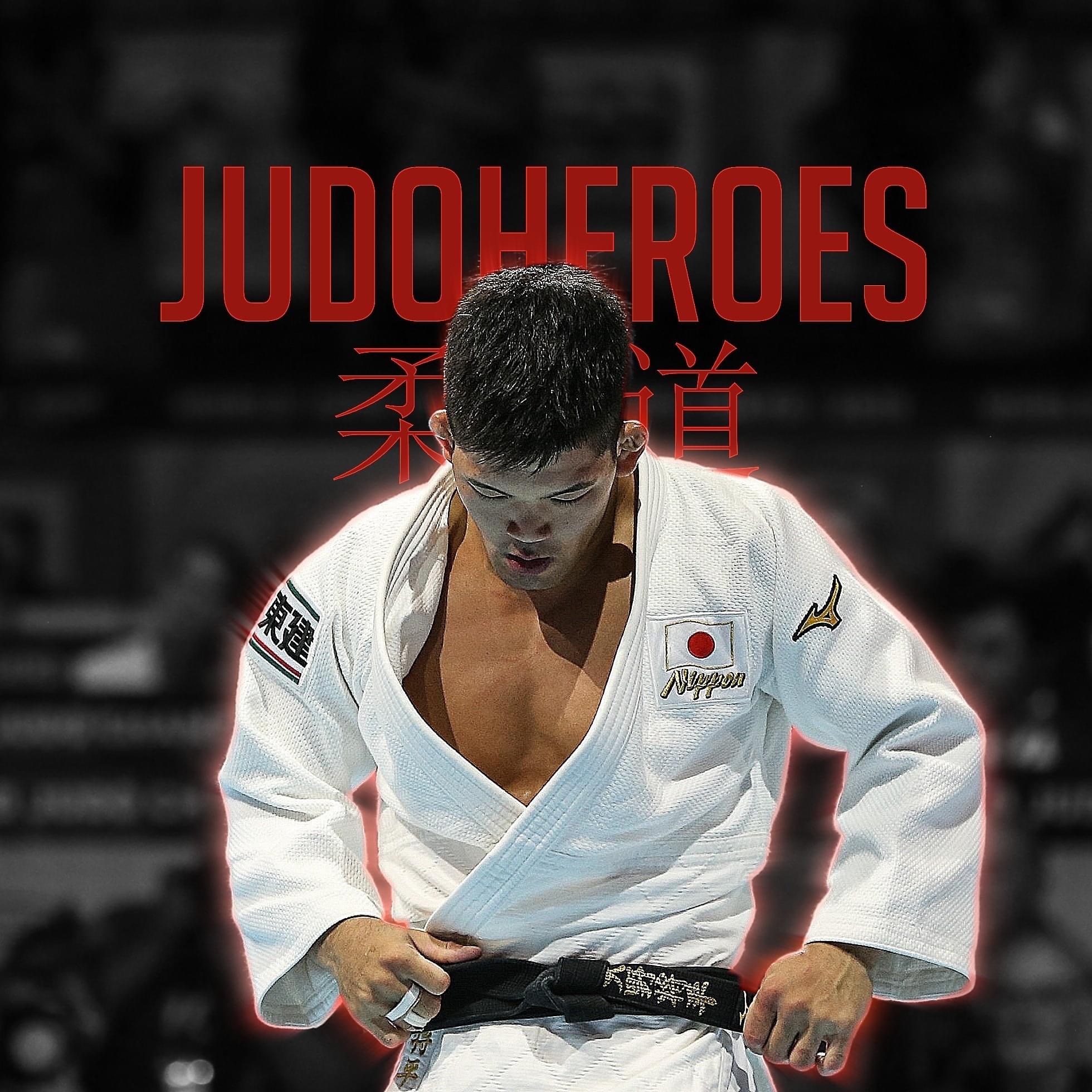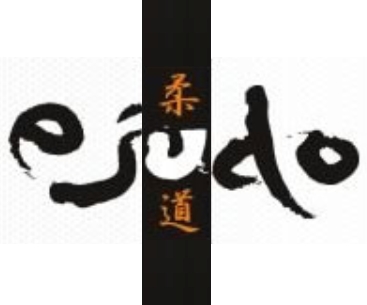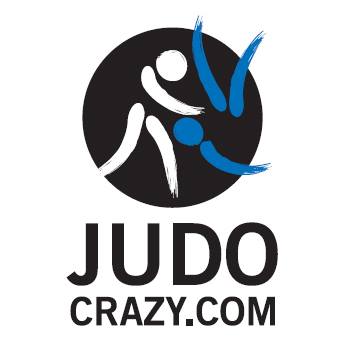Olympic Judo Chronicles: 1992 Men's U95kg finals
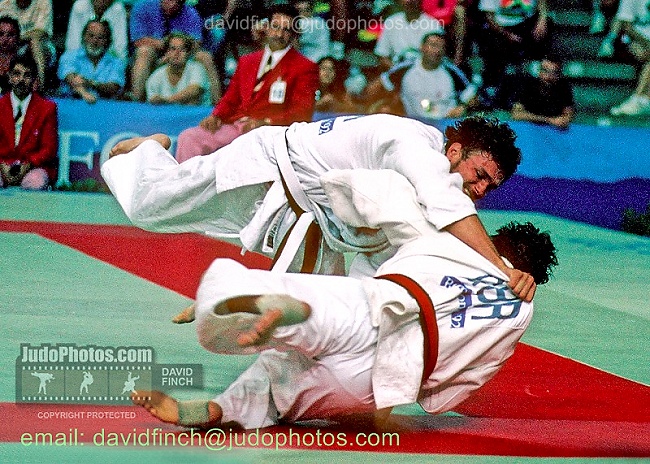
 18 Nov 2020 17:20
18 Nov 2020 17:20
 by Oon Yeoh of JudoCrazy
by Oon Yeoh of JudoCrazy
 David Finch / Judophotos.com
David Finch / Judophotos.com
JudoCrazy's oon Yeoh takes us back to Barcelona at the Olympic Games in 1992. One of the most awesome categories at that time. The men’s -95kg was probably the most competitive category of the entire competition. The top two favourites were World Champion Stephane Traineau of France and Pawel Nastula of Poland.
There were plenty of other top players participating, including defending Olympic Champion Aurelio Miguel of Brazil, former Olympic Champion Robert Van De Walle of Belgium, World Silver Medallist Theo Meijer of the Netherlands, and European Silver Medallist Dimitry Sergeev of Russia.
While the past three finals (Women’s +72kg, Men’s +95kg and Women’s -72kg) were all rematches of the 1991 World Championships, this category saw neither of the World’s finalist make it to the gold medal match. Nor did any of the other top champions make it. Instead, we had two relative unknowns in the form of Antal Kovacs of Hungary and Ray Stevens of Great Britain.
Stephane Traineau qualifies
France’s Stephane Traineau easily defeated Indonesia’s Hengky Pie using a very European Khabarelli technique. Next, he armlocked Iceland’s Bjarni Fridriksson for ippon. He looked all set to get to the quarter-finals when one of the biggest upsets of the tournament happened in his match against Leo White of the USA, whose greatest claim to fame was his surprise defeat of Robert Van De Walle in the 1984 Los Angeles Olympics, when he threw the Belgian Olympic Champion with a massive soto-makikomi for ippon. We, he repeated that feat with Traineau, stunning the crowd (and Traineau, no doubt), with a massive soto-makikomi for ippon. They say lightning doesn’t strike twice, but it did for White. Unfortunately for Traineau, White then lost his next match, which meant Traineau had no chance to climb up through the repechage and fight for a bronze.
Leg grabs of Pavel Nastula
Nastula, meanwhile, was stunning the crowd with his incredible leg grabs. He took South Korea’s Yoon Sang-Sik apart with three leg grabs, the last one resulting in a big ippon. Against Van De Walle, he did the same leg grab, and again scored a big ippon with it. Against the Mongolian Odvogin Baljinnyam, he relied on drop seoi-nage, another favourite throw of his.
Nastula was on fire but he became unstuck when he met little-known Ray Stevens of Great Britain, who had steadily rose up the pool, defeating Estonia’s capable Indrek Pertelson, Romania’s Ivan Radu, and Cuba’s Belarmino Salgado Martinez without attracting much attention. But before you knew it, he was in the semi-final against none other than Nastula.
Their’s was an intense battle that went back and forth. Nastula scored first with a leg grab to score koka. Stevens replied with a leg grab of his own which scored yuko (though it could very easily have been a waza-ari). Nastula, who was very tired, then made a tactical mistake. He tried to catch his breath by taking his own sweet time to tie his belt. He got punished with a shido from the observant referee. Back then a shido meant a koka for Stevens. That means Stevens had a yuko and a koka on the board while Nastula had only one koka so far. With time running out, Nastula was able to drop underneath Stevens to score a yuko. They were now dead even with a yuko and a koka each. But the referees gave the hantei to Stevens. Nastula collapsed to the ground, perhaps due to exhaustion or disappointment. It was probably a combination of both. But Stevens was through to the final.
Antal Kovacs blitzes through
One the other side, another unknown, Antal Kovacs of Hungary, was blitzing his way through the pool although he faced a bevy of tough opponents. His first one, against Moises Torres of Angola, was relatively easy. But after that, it was one difficult opponent after another: Sergeev of Russia, Miguel of Brazil, and Meijer of the Netherlands (in the semi-final). He beat all of them convincingly, using mainly unconventional techniques but occasionally using traditional techniques (he threw Miguel with an absolutely classical uchimata) and earned himself a place in the final.
Bronzes
In the first bronze medal match, Meijer defeated Indrek Pertelson of Estonia with a well-timed footsweep, still it was a major disappointment for the Dutchman who was supported by lots of home supporters in the Palau Blau Grana.
In the other bronze medal match, Sergeev defeated the leg-grabbing specialist Nastula with a leg grab ouchi-gari that scored waza-ari although it could have easily been an ippon. It was enough though for him to win that match.
Final
The final featured two players who nobody, at the start of the day, would have predicted could have gotten this far. But they didn’t disappoint the crowd who saw two extremely hungry individuals giving all they’ve got to win the gold.
Stevens, a former training partner of Neil Adams, looked like he could have won the match with an armlock. Early in the match, he managed to roll Kovacs into the juji-gatame position but the Hungarian managed to roll back out and wait for a matte to be called.
The much-taller Kovacs, then threw Stevens with an uchimata-makikomi for yuko. Stevens threw caution to the wind and went right after Kovacs, to try to even the score. This gave Kovacs the chance to launch another uchimata for yuko, again. In the final seconds of the match, Stevens tried a desperate sode-tsurikomi-goshi but Kovacs countered that for a koka, after which the match was over. The Briton had fought well but he was no match for Kovacs in the stand-up game. His best chance was on the ground but after that initial scare with the armlock roll, Kovacs mainly stayed on his feet, which ultimately proved to be the correct strategy.
Read more cutting-edge judo content by Oon Yeoh at JudoPatreon
 like
like
 share
share

| Result | City | Date |
|---|---|---|
| 3 | Belgrade | 2023 |
| 2 | Montpellier | 2023 |
| 3 | Budapest | 2023 |
| 1 | Doha | 2023 |
| 1 | Paris | 2023 |
| Result | City | Date |
|---|---|---|
| 1 | Tashkent | 2 Mar |
| 1 | Paris | 3 Feb |
| 1 | Budapest | 2023 |
| 2 | Tokyo | 2023 |
| 5 | Montpellier | 2023 |
